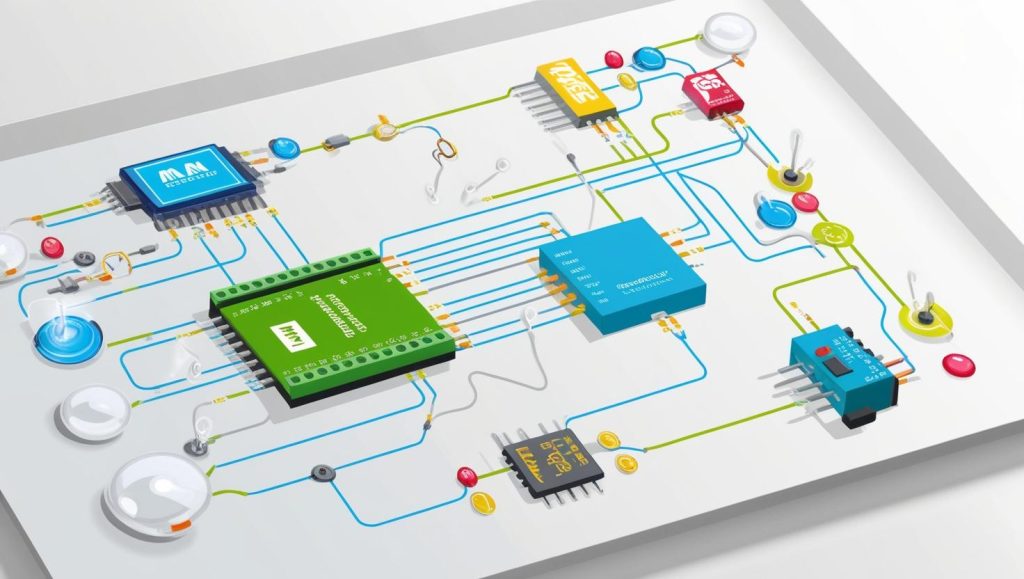Meta Description
Struggling with embedded systems assignments? Get expert Embedded System homework help with this detailed guide covering microcontrollers, real-time systems, and programming techniques to improve your grades.

Introduction
Embedded systems are at the core of modern technology, powering everything from smartphones and medical devices to automotive electronics and industrial machines. Mastering embedded systems requires a solid understanding of hardware, software, and real-time processing. However, students often find Embedded System homework challenging due to its interdisciplinary nature, requiring expertise in computer science, electronics, and control systems.
In this comprehensive guide, we provide Embedded System homework help by breaking down key concepts, discussing common challenges, and sharing essential tips for excelling in your coursework.
What is an Embedded System?
An embedded system is a specialized computing system designed to perform dedicated functions within a larger system. Unlike general-purpose computers, embedded systems are optimized for specific tasks, often operating under real-time constraints.
Key Components of an Embedded System
To understand embedded systems, it’s essential to break them down into their core components:
- Microcontroller or Microprocessor – The brain of the embedded system, responsible for executing instructions.
- Memory (RAM & ROM) – Stores programs and temporary data.
- Input and Output Interfaces – Sensors, displays, and communication modules for interaction.
- Power Supply – Ensures stable operation.
- Software (Firmware) – Code that runs on the embedded device, often written in C, C++, or assembly language.
Real-World Applications of Embedded Systems
Embedded systems are used in:
- Automotive industry (e.g., ABS systems, airbag control).
- Consumer electronics (e.g., smart TVs, gaming consoles).
- Healthcare devices (e.g., pacemakers, blood pressure monitors).
- Industrial automation (e.g., robotic arms, PLC systems).
Understanding these applications will give you a strong foundation when working on Embedded System homework assignments.
Common Topics in Embedded System Homework
1. Microcontrollers and Microprocessors
Students often struggle with microcontroller programming, especially when working with platforms like Arduino, Raspberry Pi, and PIC microcontrollers. Key concepts include:
- Register-level programming.
- Interrupt handling.
- Peripheral interfacing (UART, SPI, I2C).
🔗 Resource: Introduction to Microcontrollers – GeeksforGeeks
2. Real-Time Operating Systems (RTOS)
RTOS is a crucial part of embedded systems, ensuring that tasks execute within strict time constraints. Important RTOS concepts include:
- Task scheduling (preemptive vs. cooperative scheduling).
- Multithreading and process synchronization.
- Interrupt handling in real-time systems.
🔗 Resource: FreeRTOS – Official Documentation
3. Embedded C and Assembly Programming
Many assignments require writing efficient, low-level code for embedded systems. Topics include:
- Bitwise operations and memory management.
- Writing drivers for hardware components.
- Debugging and optimization techniques.
🔗 Resource: Embedded C Programming Guide – Microchip
4. Communication Protocols
Embedded systems often communicate with other devices through various protocols:
- UART (Universal Asynchronous Receiver-Transmitter)
- SPI (Serial Peripheral Interface)
- I2C (Inter-Integrated Circuit)
- CAN Bus (Controller Area Network)
Understanding these protocols is essential for interfacing different components in an embedded system.
🔗 Resource: Basics of Embedded Communication Protocols – Circuit Digest
5. Power Management in Embedded Systems
Power optimization is critical in battery-operated devices. Key techniques include:
- Low-power modes in microcontrollers.
- Energy-efficient circuit design.
- Dynamic voltage and frequency scaling.
Challenges Students Face in Embedded System Homework
1. Complex Hardware Interfacing
Students often struggle to connect and program hardware components like sensors, actuators, and displays.
Solution: Start with simple interfacing projects before moving to complex ones.
2. Debugging Embedded Code
Unlike traditional software debugging, embedded debugging requires tools like JTAG debuggers and logic analyzers.
Solution: Use simulators like Proteus and Keil uVision before testing on actual hardware.
3. Understanding Real-Time Constraints
Meeting strict timing constraints is challenging, especially in time-sensitive applications like robotics and automotive systems.
Solution: Study scheduling algorithms and learn how to use RTOS efficiently.
4. Memory and Resource Constraints
Embedded systems often have limited RAM and storage.
Solution: Optimize your code, avoid unnecessary memory allocations, and use data compression techniques.
Embedded System Homework Help: Effective Strategies
1. Master the Fundamentals
Before diving into assignments, ensure you have a solid grasp of microcontrollers, programming languages, and hardware components.
2. Use Online Simulators and Debuggers
If you don’t have access to actual hardware, use simulators like:
- Tinkercad (for Arduino-based projects).
- Keil uVision (for ARM-based development).
- Proteus (for circuit simulations).
3. Refer to Open-Source Projects
Explore GitHub repositories for sample embedded system projects to understand real-world implementations.
🔗 Resource: GitHub – Embedded Systems Projects
4. Practice with Hands-on Projects
Try small projects like:
- Building a temperature monitoring system using Arduino.
- Creating a simple IoT device with ESP8266.
- Developing an LED matrix display controller.
5. Seek Help from Experts
If you’re struggling, don’t hesitate to seek professional Embedded System homework help from online tutoring platforms or communities like:
🔗 Resource: Stack Overflow – Embedded Systems
Where to Find Embedded System Homework Help Online
If you need extra help, consider the following platforms:
- Coursera & Udemy – Offers online courses on embedded systems.
- Chegg & Course Hero – Provides homework help from experts.
- Reddit r/embedded – A community for embedded systems discussions.
- Online Tutors – Websites like Wyzant offer personalized tutoring for embedded systems.
Conclusion: Master Embedded Systems with Confidence
Embedded systems are a fascinating yet challenging subject that combines hardware and software engineering. By understanding microcontrollers, real-time processing, and communication protocols, you can master the concepts and excel in your coursework.
With the right approach, online resources, and expert Embedded System homework help, you can confidently complete your assignments and build real-world projects.
If you need more assistance, explore the links and platforms mentioned in this guide to deepen your understanding of embedded systems.


